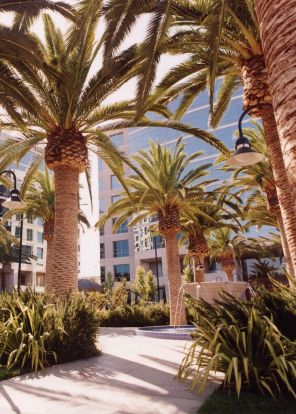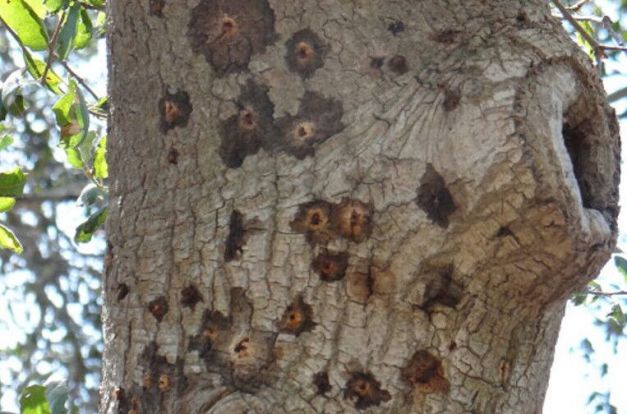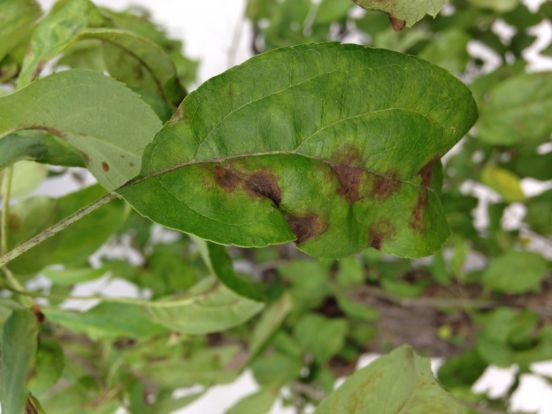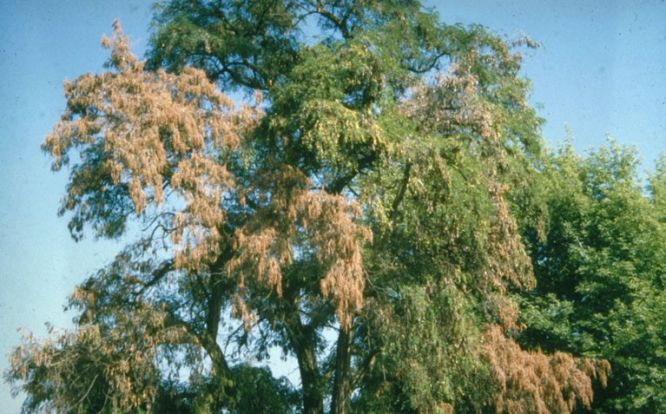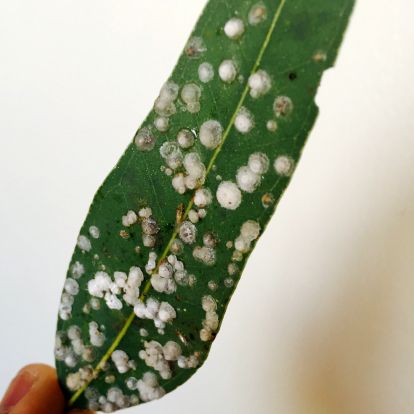Prevention Season is Starting
Fall & winter are the most valuable time to protect your trees from next season’s insects and diseases. Whether its sticky sap, borers and bark beetles, or diseases like anthracnose or fireblight, fall or winter are ideal times to protect your trees. When treated now, trees have all winter to move protective products into and throughout their stems, twigs and roots. These products will be ready to work as soon as new growth starts next spring. Many diseases infect as soon as leaves appear, so by NOT protecting now, we are essentially playing catch-up if we don’t protect trees until after they start growing. This also most sense, given the stresses our trees have had to overcome the past several years. Stressed trees are more prone to insects and diseases because their defense systems are weakened and they have a harder time protecting themselves. So along with proper pruning, watering and mulching, protecting against insects and diseases will help them become healthy again.
My trees seem to be struggling still, why is that?
Well most likely they are still recovering from the stresses of the drought we have had. When trees are stressed, whether it is drought, lack of irrigation, flooding, or whatever stress has occurred, they reduce the output of new leaves and new roots. They don’t produce as much energy storage and they stop producing the compounds (auxins and enzymes) that they use to ward off attacks. Thus, they become more vulnerable to damage from insects and diseases.
Will they die?
Its hard to determine that without a good evaluation from a certified arborist. That being said, providing extra “help” for them right now is very beneficial to their recovery. Just like a marathon runner that starts out in good shape, if that runner is forced to run back to back to back marathons without the time to recover well, they become more prone to injuries and illnesses. Allowing for proper recovery allows them to run another marathon (another stress) down the road. So, trees need this recovery period too, reduced stress from lack of water, excess heat, over watering and attacks from diseases and insects, so they can build their defense systems again, like we need to recover our immune systems.
How do I help them recover?
First reduce additional stresses – proper watering, mulching, pruning are key components to helping your trees recover. Second, by proactively protecting a tree from insects and diseases, they have a further chance to build those defense systems. If an insect – like caterpillars for instance, defoliates a tree next spring, that tree has to put new leaves out a second time. The same goes for diseases like anthracnose or fireblight. The energy the tree expends by putting out a second set of leaves prevents it from building up its defense system again, thus prolonging the recover. If this weakened tree is subject to another multi-year drought cycle, the chance of it surviving is even lower.
When is the best time to treat my trees?
Fall and early winter are the best times by far. This allows ample time for the systemic treatment to completely circulate throughout the tree. It allows the treatment to be ready as soon as spring growing season starts again. Late winter and early spring are the second-best time. It is still early enough to have the treatment be effective under most circumstances.
What kinds of problems can you control proactively?
Many of the most common insects and diseases can be suppresses this way. Insects that produce sap, most boring insects, most scale and thrips, adelgids, caterpillars and twig boring insects for example. As far as diseases go, preventing is so valuable, because by the time you see a disease on a tree, the damage has essentially been done. This is true for fireblight, anthracnose, powdery mildew, root rots like verticillium and phythophera and stem and twig cankers and needle blights on evergreens. Lastly a nutritional supplement can be applied at the same time. Many times, a tree is stressed in part because of the lack of available nutrients in the soil. We can provide a balanced, organic nutritional supplement that will give your trees a proper feeding. Or better yet, we can sample your soil and replace exactly what your trees need.
Fill out the form below to contact your Arborwell arborist today to help you make a tree protection plan for next year.
